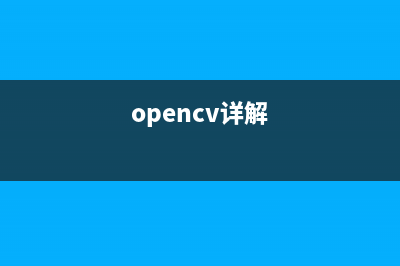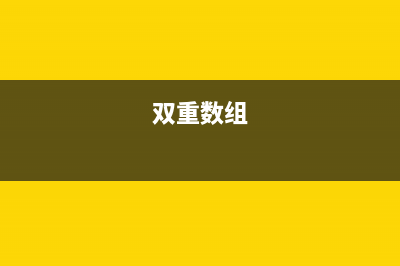位置: IT常识 - 正文
Yolopose关键点检测:自己标注数据集,制作数据集(一)(关键点检测backbone)
编辑:rootadmin推荐整理分享Yolopose关键点检测:自己标注数据集,制作数据集(一)(关键点检测backbone),希望有所帮助,仅作参考,欢迎阅读内容。
文章相关热门搜索词:yolopose关键点检测,关键点检测算法,关键点检测原理,yolo关键点检测,关键点检测,yolo关键点检测,yolo关键点检测,yolo关键点检测,内容如对您有帮助,希望把文章链接给更多的朋友!
最近实习需要搞的工程涉及到姿态估计,对这2天的学习做一下总结归纳,第一步就是准备数据集,查资料后发现window环境下使用的标注软件就是labelme(coco-annotator好像就可以直接输出coco格式的JSON文件,后期继续学习),labelme产出的JSON文件需要转换到coco格式的JSON文件,然后将JSON文件转成Yolo需要的txt文件,才能送工程进行训练,转来转去的个人感觉非常麻烦。 本博文主要内容是分享关键点的labelme2coco——JSON文件转换,cocoJSON2cocotxt的转换,以及coco_kpts文件夹的内容布局。
一、labelme标注关键点的使用:用labelme标注关键点与后续的labelme2coco转换代码息息相关,假设标注对象是人体,关键点有17个:“nose”,“left_eye”, “right_eye”,“left_ear”, “right_ear”,“left_shoulder”, “right_shoulder”,“left_elbow”, “right_elbow”,“left_wrist”, “right_wrist”,“left_hip”, “right_hip”,“left_knee”, “right_knee”,“left_ankle”, “right_ankle”,label编号从1依次排到17,然后再把人用rectangle框出来label编号为bbox(Yolopose是需要画框的,并且numclass已经固定好了为person),所有的Group id都不用写,JSON文件会自动补上null但不影响我们后续操作,填写label及Group id的界面如下图所示: 选取一张图片,把17个关键点都标注出来,再把人框出来,如果对象显示半个身体,不满17个关键点,也无所谓,没有哪个部位就把那个部位标注数值空出来就可以了,一张图片操作结束后,就如下图所示: coco图片的格式是12位数字,标注完后的JSON文件用相同的名称命名即可。
二、labelme2coco_keypoints.py
CSDN上的其他转换代码,我都没法直接跑,也没有相关的讲解,于是我就拿了现有的代码修改了一些,并记录了我的学习过程。先介绍一下哪些部分需要修改的,然后在附上整个代码,以17个人体关键点标注好的JSON文件为例。
"keypoints":#这是固定的,要是其他的关键点标注,则需要修改内容并且与前面的label编号一一对应。 [ "nose", "left_eye", "right_eye", "left_ear", "right_ear", "left_shoulder", "right_shoulder", "left_elbow", "right_elbow", "left_wrist", "right_wrist", "left_hip", "right_hip", "left_knee", "right_knee", "left_ankle", "right_ankle" ], "skeleton": [ [16, 14], [14, 12], [17, 15], [15, 13], [12, 13], [6, 12], [7, 13], [6, 7], [6, 8], [7, 9], [8, 10], [9, 11], [2, 3], [1, 2], [1, 3], [2, 4], [3, 5], [4, 6], [5, 7] ]json_file[-17:-5]#这是为了取文件的名称,比如000000000001,如果文件名称变了,则需要修改json_file[-17:-4]#这是为了取文件的名称,比如000000000001.(多一个.)keypoints 里面放的是(x,y,v):x,y是坐标值,v一般取2,0代表没有该点,1代表该点存在但是被遮挡了,2代表该点存在且没有被遮挡。(具体可以参考coco数据集的格式,本文主要介绍如何应用)
keypoints = [0] * 3 * 17 #这里是我们标注的关节点个数 如有改动,需要修改json_path = r'E:\val2017\Json' #存放需要转换的json文件夹,变动需要修改c = tococo(json_path, save_path=r'E:\val2017\annotations\val.json', a=1) #输出的地址及名称,变动需要修改整个代码如下,可以做到一个文件夹下所有的JSON文件一起转换并输出一个coco格式的JSON文件
import numpy as npimport jsonimport globimport codecsimport osclass MyEncoder(json.JSONEncoder): def default(self, obj): if isinstance(obj, np.integer): return int(obj) elif isinstance(obj, np.floating): return float(obj) elif isinstance(obj, np.ndarray): return obj.tolist() else: return super(MyEncoder, self).default(obj)class tococo(object): def __init__(self, jsonfile, save_path, a): self.images = [] self.categories = [ { "supercategory": "person", "id": 1, "name": "person", "keypoints": [ "nose", "left_eye", "right_eye", "left_ear", "right_ear", "left_shoulder", "right_shoulder", "left_elbow", "right_elbow", "left_wrist", "right_wrist", "left_hip", "right_hip", "left_knee", "right_knee", "left_ankle", "right_ankle" ], "skeleton": [ [16, 14], [14, 12], [17, 15], [15, 13], [12, 13], [6, 12], [7, 13], [6, 7], [6, 8], [7, 9], [8, 10], [9, 11], [2, 3], [1, 2], [1, 3], [2, 4], [3, 5], [4, 6], [5, 7] ] } ] self.annotations = [] self.jsonfile = os.listdir(jsonfile) self.save_path = save_path # 保存json的路径 self.class_id = a # class 我们的类别只有一个 person self.coco = {} self.path = jsonfile def labelme_to_coco(self): for num, json_file in enumerate(self.jsonfile): json_file = os.path.join(self.path, json_file) data = codecs.open(json_file, 'r') data = json.load(data) self.images.append(self.get_images(json_file[-17:-4] + 'jpg', data["imageHeight"], data["imageWidth"])) shapes = data["shapes"] annotation = {} # 一个annotation代表一张图片中的所有samples num_keypoints = 0 keypoints = [0] * 3 * 17 #这里是我们标注的关节点个数 如有改动,需要修改 flag = 0 for shape in shapes: if shape['shape_type'] == 'rectangle' or shape["label"] == 'bbox': bbox = [] temp = shape["points"] try: x_min = min(temp[0][0], temp[1][0]) except IndexError as e: print('class: {}, image: {}'.format(self.class_id, int(json_file[-17:-5]))) x_max = max(temp[0][0], temp[1][0]) y_min = min(temp[0][1], temp[1][1]) y_max = max(temp[0][1], temp[1][1]) bbox.append(x_min) bbox.append(y_min) w = x_max - x_min + 1 h = y_max - y_min + 1 bbox.append(w) bbox.append(h) annotation['bbox'] = bbox flag = flag + 1 else: idx = int(shape['label']) try: keypoints[(idx - 1) * 3 + 0] = shape['points'][0][0] keypoints[(idx - 1) * 3 + 1] = shape['points'][0][1] keypoints[(idx - 1) * 3 + 2] = 2 num_keypoints = num_keypoints + 1 except IndexError as e: print('class: {}, image: {}'.format(self.class_id, int(json_file[-17:-5]))) if flag == 0: print('{}\\{} does not contain bbox\n'.format(self.class_id, json_file)) annotation['segmentation'] = [[]] annotation['num_keypoints'] = num_keypoints annotation['iscrowd'] = 0 annotation['keypoints'] = keypoints annotation['image_id'] = int(json_file[-17:-5]) # 对应的图片ID if 'bbox' not in annotation: annotation['bbox'] = [0, 0, data['imageWidth'], data['imageHeight']] annotation['area'] = 0 else: annotation['area'] = int(bbox[2] * bbox[3]) annotation['category_id'] = 1 annotation['id'] = int(json_file[-17:-5]) # 对象id self.annotations.append(annotation) self.image_id = int(json_file[-17:-5]) self.coco["images"] = self.images self.coco["categories"] = self.categories self.coco["annotations"] = self.annotations def get_images(self, filename, height, width): image = {} image["height"] = height image['width'] = width image["id"] = int(filename[-16:-4]) image["file_name"] = filename return image def get_categories(self, name, class_id): category = {} category["supercategory"] = "person" category['id'] = class_id category['name'] = name return category def save_json(self): self.labelme_to_coco() coco_data = self.coco # 保存json文件 json.dump(coco_data, open(self.save_path, 'w'), indent=4, cls=MyEncoder) # indent=4 更加美观显示 return self.image_idjson_path = r'E:\val2017\Json_old' #保存json的文件夹路径c = tococo(json_path, save_path=r'E:\val2017\annotations_old\val.json', a=1) #我们将我们的左右json文件合成为一个json文件,这是最后json文件的名称image_id = c.save_json()本人将5个JSON文件放在同一个文件夹下运行转换代码,最后val.json通过VS2022(其他软件也可以)打开后内容如下所示:
三、coco api来检查coco格式的JSON文件是否有问题# !/usr/bin python3# encoding : utf-8 -*-# @author : liangjian# @software : PyCharm# @file : 0408.py# @Time : 2021/4/8 21:51import skimage.io as ioimport pylabimport time as timeimport jsonimport numpy as npfrom collections import defaultdictimport itertoolsimport matplotlib.pyplot as pltfrom matplotlib.collections import PatchCollectiondef _isArrayLike(obj): return hasattr(obj, '__iter__') and hasattr(obj, '__len__')class COCO: def __init__(self, annotation_file=None): """ Constructor of Microsoft COCO helper class for reading and visualizing annotations. :param annotation_file (str): location of annotation file :param image_folder (str): location to the folder that hosts images. :return: """ # load dataset self.dataset, self.anns, self.cats, self.imgs = dict(), dict(), dict(), dict() self.imgToAnns, self.catToImgs = defaultdict(list), defaultdict(list) if not annotation_file == None: print('loading annotations into memory...') tic = time.time() dataset = json.load(open(annotation_file, 'r')) assert type(dataset) == dict, 'annotation file format {} not supported'.format(type(dataset)) print('Done (t={:0.2f}s)'.format(time.time() - tic)) self.dataset = dataset self.createIndex() def createIndex(self): # create index print('creating index...') anns, cats, imgs = {}, {}, {} imgToAnns, catToImgs = defaultdict(list), defaultdict(list) if 'annotations' in self.dataset: for ann in self.dataset['annotations']: imgToAnns[ann['image_id']].append(ann) anns[ann['id']] = ann if 'images' in self.dataset: for img in self.dataset['images']: imgs[img['id']] = img if 'categories' in self.dataset: for cat in self.dataset['categories']: cats[cat['id']] = cat if 'annotations' in self.dataset and 'categories' in self.dataset: for ann in self.dataset['annotations']: catToImgs[ann['category_id']].append(ann['image_id']) print('index created!') # create class members self.anns = anns self.imgToAnns = imgToAnns self.catToImgs = catToImgs self.imgs = imgs self.cats = cats def getCatIds(self, catNms=[], supNms=[], catIds=[]): """ filtering parameters. default skips that filter. :param catNms (str array) : get cats for given cat names :param supNms (str array) : get cats for given supercategory names :param catIds (int array) : get cats for given cat ids :return: ids (int array) : integer array of cat ids """ catNms = catNms if _isArrayLike(catNms) else [catNms] supNms = supNms if _isArrayLike(supNms) else [supNms] catIds = catIds if _isArrayLike(catIds) else [catIds] if len(catNms) == len(supNms) == len(catIds) == 0: cats = self.dataset['categories'] else: cats = self.dataset['categories'] # print(' ') # print('keypoints的cat就只有人1种') # print(cats) cats = cats if len(catNms) == 0 else [cat for cat in cats if cat['name'] in catNms] cats = cats if len(supNms) == 0 else [cat for cat in cats if cat['supercategory'] in supNms] cats = cats if len(catIds) == 0 else [cat for cat in cats if cat['id'] in catIds] # print(cats) ids = [cat['id'] for cat in cats] return ids def loadCats(self, ids=[]): """ Load cats with the specified ids. :param ids (int array) : integer ids specifying cats :return: cats (object array) : loaded cat objects """ if _isArrayLike(ids): return [self.cats[id] for id in ids] elif type(ids) == int: return [self.cats[ids]] def getImgIds(self, imgIds=[], catIds=[]): ''' Get img ids that satisfy given filter conditions. :param imgIds (int array) : get imgs for given ids :param catIds (int array) : get imgs with all given cats :return: ids (int array) : integer array of img ids ''' imgIds = imgIds if _isArrayLike(imgIds) else [imgIds] catIds = catIds if _isArrayLike(catIds) else [catIds] if len(imgIds) == len(catIds) == 0: ids = self.imgs.keys() else: ids = set(imgIds) for i, catId in enumerate(catIds): if i == 0 and len(ids) == 0: ids = set(self.catToImgs[catId]) else: ids &= set(self.catToImgs[catId]) return list(ids) def loadImgs(self, ids=[]): """ Load anns with the specified ids. :param ids (int array) : integer ids specifying img :return: imgs (object array) : loaded img objects """ if _isArrayLike(ids): return [self.imgs[id] for id in ids] elif type(ids) == int: return [self.imgs[ids]] def getAnnIds(self, imgIds=[], catIds=[], areaRng=[], iscrowd=None): """ Get ann ids that satisfy given filter conditions. default skips that filter :param imgIds (int array) : get anns for given imgs catIds (int array) : get anns for given cats areaRng (float array) : get anns for given area range (e.g. [0 inf]) iscrowd (boolean) : get anns for given crowd label (False or True) :return: ids (int array) : integer array of ann ids """ imgIds = imgIds if _isArrayLike(imgIds) else [imgIds] catIds = catIds if _isArrayLike(catIds) else [catIds] if len(imgIds) == len(catIds) == len(areaRng) == 0: anns = self.dataset['annotations'] else: # 根据imgIds找到所有的ann if not len(imgIds) == 0: lists = [self.imgToAnns[imgId] for imgId in imgIds if imgId in self.imgToAnns] anns = list(itertools.chain.from_iterable(lists)) else: anns = self.dataset['annotations'] # 通过各类条件如catIds对anns进行筛选 anns = anns if len(catIds) == 0 else [ann for ann in anns if ann['category_id'] in catIds] anns = anns if len(areaRng) == 0 else [ann for ann in anns if ann['area'] > areaRng[0] and ann['area'] < areaRng[1]] if not iscrowd == None: ids = [ann['id'] for ann in anns if ann['iscrowd'] == iscrowd] else: ids = [ann['id'] for ann in anns] return ids def loadAnns(self, ids=[]): """ Load anns with the specified ids. :param ids (int array) : integer ids specifying anns :return: anns (object array) : loaded ann objects """ if _isArrayLike(ids): return [self.anns[id] for id in ids] elif type(ids) == int: return [self.anns[ids]] def showAnns(self, anns): """ Display the specified annotations. :param anns (array of object): annotations to display :return: None """ if len(anns) == 0: return 0 if 'segmentation' in anns[0] or 'keypoints' in anns[0]: datasetType = 'instances' elif 'caption' in anns[0]: datasetType = 'captions' else: raise Exception('datasetType not supported') if datasetType == 'instances': ax = plt.gca() ax.set_autoscale_on(False) polygons = [] color = [] for ann in anns: c = (np.random.random((1, 3)) * 0.6 + 0.4).tolist()[0] # if 'segmentation' in ann: # if type(ann['segmentation']) == list: # # polygon # for seg in ann['segmentation']: # poly = np.array(seg).reshape((int(len(seg)/2), 2)) # polygons.append(Polygon(poly)) # color.append(c) # else: # # mask # t = self.imgs[ann['image_id']] # if type(ann['segmentation']['counts']) == list: # rle = maskUtils.frPyObjects([ann['segmentation']], t['height'], t['width']) # else: # rle = [ann['segmentation']] # m = maskUtils.decode(rle) # img = np.ones( (m.shape[0], m.shape[1(余下全部)], 3(from 1, 10张取一张)) ) # if ann['iscrowd'] == 1(余下全部): # color_mask = np.array([2.0,166.0,101.0])/255 # if ann['iscrowd'] == 0: # color_mask = np.random.random((1(余下全部), 3(from 1, 10张取一张))).tolist()[0] # for i in range(3(from 1, 10张取一张)): # img[:,:,i] = color_mask[i] # ax.imshow(np.dstack( (img, m*0.5) )) if 'keypoints' in ann and type(ann['keypoints']) == list: # turn skeleton into zero-based index sks = np.array(self.loadCats(ann['category_id'])[0]['skeleton']) - 1 kp = np.array(ann['keypoints']) x = kp[0::3] y = kp[1::3] v = kp[2::3] for sk in sks: if np.all(v[sk] > 0): # # 画点之间的连接线 plt.plot(x[sk], y[sk], linewidth=1, color=c) # 画点 plt.plot(x[v > 0], y[v > 0], 'o', markersize=4, markerfacecolor=c, markeredgecolor='k', markeredgewidth=1) plt.plot(x[v > 1], y[v > 1], 'o', markersize=4, markerfacecolor=c, markeredgecolor=c, markeredgewidth=1) p = PatchCollection(polygons, facecolor=color, linewidths=0, alpha=0.4) ax.add_collection(p) p = PatchCollection(polygons, facecolor='none', edgecolors=color, linewidths=2) ax.add_collection(p) elif datasetType == 'captions': for ann in anns: print(ann['caption'])pylab.rcParams['figure.figsize'] = (8.0, 10.0)annFile = r'E:\val2017\annotations_old\val.json' #转换之后的json文件路径img_prefix = r'E:\val2017'#图片文件夹路径# initialize COCO api for instance annotationscoco = COCO(annFile)# getCatIds(catNms=[], supNms=[], catIds=[])# 通过输入类别的名字、大类的名字或是种类的id,来筛选得到图片所属类别的idcatIds = coco.getCatIds(catNms=['person'])# getImgIds(imgIds=[], catIds=[])# 通过图片的id或是所属种类的id得到图片的idimgIds = coco.getImgIds(catIds=catIds)# imgIds = coco.getImgIds(imgIds=[1407])# loadImgs(ids=[])# 得到图片的id信息后,就可以用loadImgs得到图片的信息了# 在这里我们随机选取之前list中的一张图片img = coco.loadImgs(imgIds[np.random.randint(0, len(imgIds))])[0]I = io.imread('%s/%s' % (img_prefix, img['file_name']))plt.imshow(I)plt.axis('off')ax = plt.gca()# getAnnIds(imgIds=[], catIds=[], areaRng=[], iscrowd=None)# 通过输入图片的id、类别的id、实例的面积、是否是人群来得到图片的注释idannIds = coco.getAnnIds(imgIds=img['id'], catIds=catIds, iscrowd=None)# loadAnns(ids=[])# 通过注释的id,得到注释的信息anns = coco.loadAnns(annIds)print('anns:', anns)coco.showAnns(anns)plt.imshow(I)plt.axis('off')plt.show()需要修改的地方为
annFile = r'E:\val2017\annotations\val.json' #转换之后的coco格式json文件路径img_prefix = r'E:\val2017'#图片文件夹路径如果不出意外的话,就不会出现意外了,可以看到你标注的效果如下图所示:
总结至此,labelme下的JSON转coco格式的JSON就完成了,由于篇幅问题,coco格式的JSON转yolo需要的txt相关介绍,在Yolopose关键点检测:自己标注数据集,制作数据集(二)中有相关讲解。
上一篇:巨浪冲击着阿斯洛玛尔州立海滩的岩石,加利福尼亚州帕西菲克格罗夫 (© Sheila Haddad/Danita Delimont)(巨浪向我冲来改为拟人句)
下一篇:win7纯净版系统电脑设置家庭组共享及加入方法(win7纯净版系统怎么安装)



















